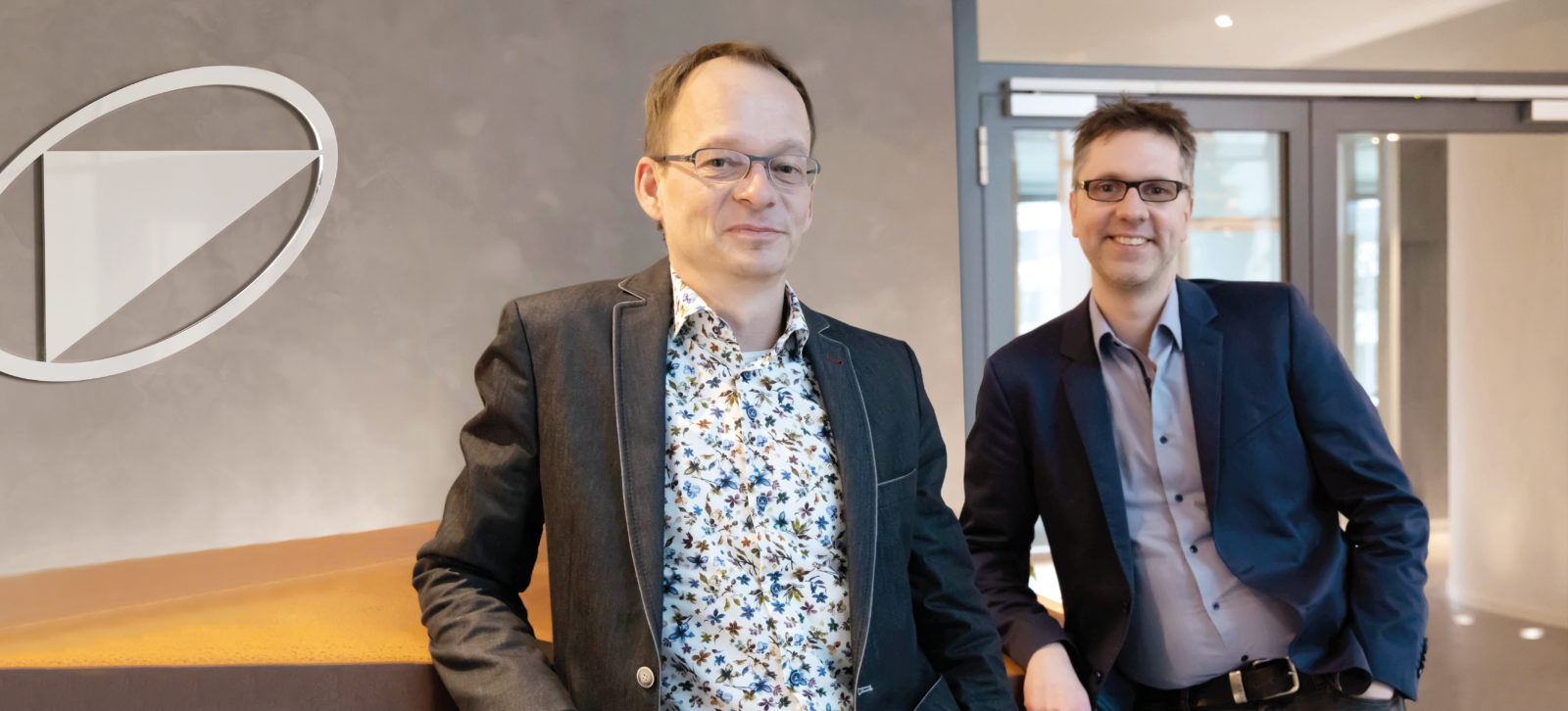Estimated reading time: 4 Minutes
The role of IT has changed over the years. Without a sophisticated digital infrastructure and the use of state-of-the-art technologies, it is not only the wheels of production that grind to a halt. How do companies, especially CIOs and their IT departments, position themselves to gain an edge through digital transformation? That is the question that occupies Karsten Kötter and Holger Himmelmann, Consulting Directors at cbs.
In the 1980s and 1990s, enterprise IT was at the forefront of the business world and was responsible for the innovations that eventually made their way to consumer IT. Today, it is the other way around. Almost everyone today has a smartphone, representing the pinnacle of technological development in terms of technology, design, and usability. Voice recognition, virtual reality, artificial intelligence, and transmission speed are combined in a compact device which seems to have the solution to every conceivable problem in just one click away. This reality is now also expected in the B2B market, by end customers and business partners.
Where’s my package? Where is the pizza delivery person with my order? When will my new Bluetooth headphones be delivered? Customers want to track their products in real-time and automatically expect the speed and data availability of Google and Apple’s user experience. These are the demands of the customers, and corporate IT has to deliver.
Why software is eating the world
The digital IT architecture of the future rests on four pillars:
- Integrated end-to-end business processes.
- Artificial intelligence.
- Real-time control.
- Experience management (the monitoring of every interaction people experience with a company).
Cybersecurity and enterprise integration are also important topics in this regard.

Karsten Kötter (links) and Holger Himmelmann, Consulting Directors at cbs.
In the 1990s, it was the norm for departments to dictate the requirements. The lengthy functional and requirement specifications would be written before implementation began. And finally, after two to three years, the software would be delivered. IT was purely an accessory; it was the classic plan-build-run model.
“If you want things done correctly, however, you have to turn this around. IT needs to get back in the driver’s seat, and it needs to work on an equal footing with the departments. So that the new technologies create meaningful and sustainable added value for the company,” explains Karsten Kötter. This means that the department has to understand new technologies. In turn, IT needs to know how the company works as a business.
IT makes companies competitive
The future-oriented IT system landscape must anticipate ongoing and expected requirements and ensure that it is prepared for smooth integration. Such requirements include cloud computing, big data, mobile services, social connectivity, customer engagement management, and the Internet of Things (IoT); the integration of many different sensors and data sources. Today, IT is a driver for those ideas to make a company competitive and even shape it to a certain extent.
The world’s largest mobility company, Uber, has no vehicles of its own, but essentially consists of software. Airbnb books the most overnight stays in the hospitality industry worldwide without owning a single hotel. It is purely an API-driven company (Application Programming Interface, API Economy). The highest-earning automotive company (Tesla) is outperforming its competitor thanks in part to its software. American investor, entrepreneur, and web browser inventor Marc Andreessen hit the nail on the head when he said: “Software is eating the world”. And this is true today than it was ten years ago.
Agile, adaptive systems
Most international companies have recognised that investments are needed in the area. They have recognised that IT has to shape the business to some extent and are on the way to making that happen. However, you cannot merely flip a switch; it is a permanent remodelling process. No one can predict what the business will look like in ten years. That’s why you have to design your IT systems to be as flexible and agile as possible to allow you to respond to rapid changes in the market, new conditions, and new competitors, even from completely different industries. Holger Himmelmann predicts: “And even if you can’t anticipate everything, you have to think ahead enough to react quickly at least. I don’t know what the future will look like. What is certain is that, in the future, things will change even faster than they already do today. Technological development will never again be as slow as it is today.”
Cloud products offer one solution for the changing market. The great advantage of these is that they allow new services to be introduced and used quickly and flexibly. You can try out use cases by simply renting a service. If it doesn’t work, you turn it off again without having invested much. However, if it works, you can go live with it. The services are as scalable as necessary. Hardware limitations are a thing of the past.

Until three years ago, cloud and the SAP Cloud Platform were almost unheard of by German companies. Today, the topic is high on the agenda of all companies with a significant SAP footprint. Karsten Kötter: “Cloud services are set to play a key role in the IT roadmap of almost all enterprises.” It is common to see hybrid system landscapes in an SAP context, combining on-premise systems with cloud services. SAP Cloud Platform is also not a panacea for every use case, so companies usually use another cloud provider in parallels, such as Azure, Amazon Web Services, or Google. Thus, the future is not only hybrid, but it is also a multi-cloud environment.
The key role of cloud services
With the triumph of the cloud, enterprise IT must open up much more to the outside world. This leads to entirely new challenges in the integration area because you suddenly have to integrate data from foreign sources. IT must trust other business partners and integrate third-party systems that are no longer under their control.
Karsten Kötter: “Many customers come to me and don’t even know where they stand with their system landscape. Then, based on our best practices, we jointly develop a vision, a ONE Digital Architecture. There’s more to it than just the cloud. It involves integration, analytics, new development models such as BizDevOps, and new organisational forms. Ideally, you don’t just take one issue in isolation; you look at the big picture.”
Successful projects with top industrial companies
Kötter often works with both IT and the departments. The project itself then reveals which possibilities and rapid implementation speed the new technologies offer. This arouses enthusiasm, and new ideas emerge all by themselves. Innovative apps go live in the shortest possible time. Because the whole thing is not only an experiment, it also quickly brings real added value. Successful cbs projects at well-known global players such as Schott, tesa, B.Braun, Merck, Wacker Neuson, and Henkel show that this methodology
“Our goal is to raise the profile and value of enterprise IT within the company and thus successfully put IT back in the driver’s seat at the customer through our contacts. That’s where it needs to go, in my view. Out of the passive fulfilment role, into an active, creative, strategic position. Today, corporate IT must be a thought leader and source of innovation for the business,” emphasises Himmelmann.
Your contact



